What you’ll learn
This is Part 1 of the camper van build series: the overview. We’ll walk through the specs, cost breakdown, fuel, weight, and livability. We designed our van for a family of 2 adults and 2 children.
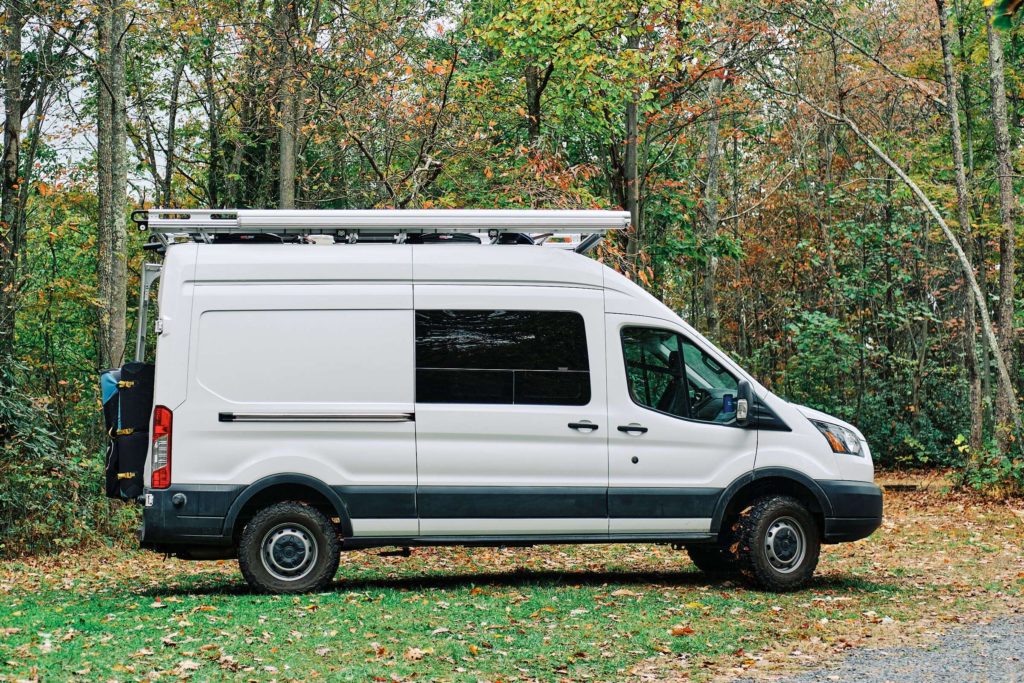
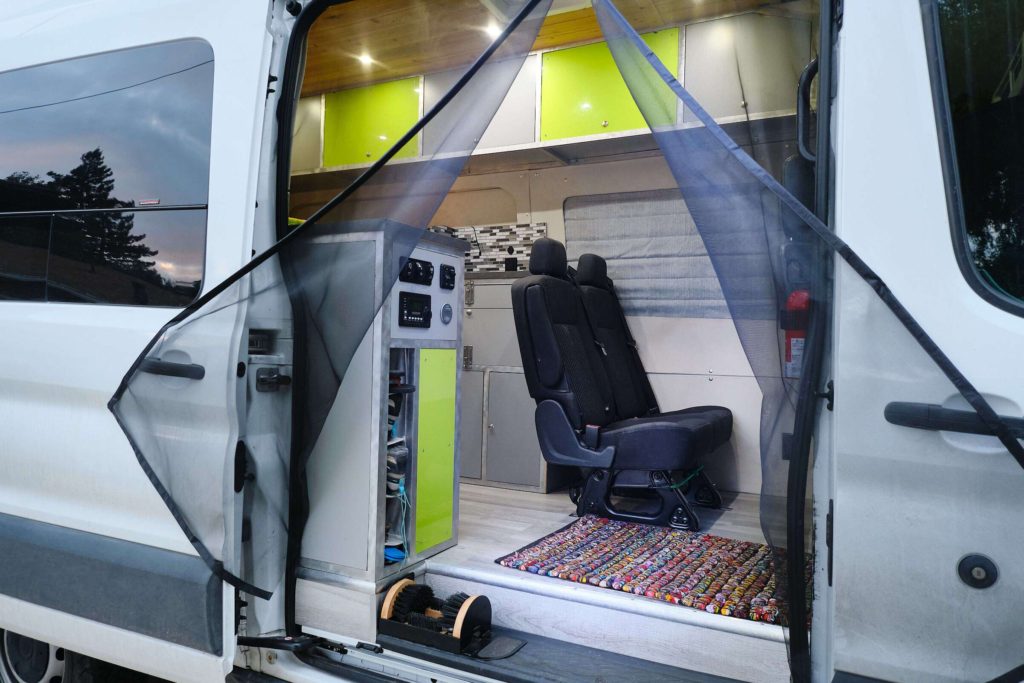
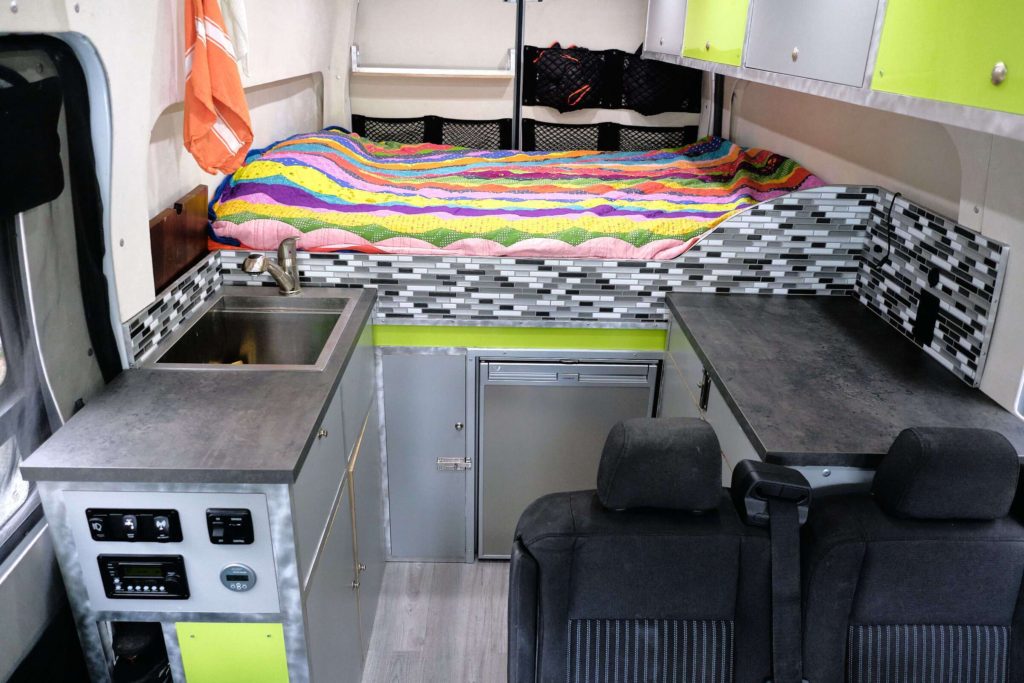


Specs
- 2018 Ford Transit 250 high roof, mid-length (148″ wheelbase), Diesel
- Quigley 4×4 conversion + BF Goodrich KO2 tires
- SumoSprings + SuperSprings added suspension
- 300Ah AGM battery bank charges from solar, alternator, and shore power
- 400W solar
- 3000W inverter
- Recessed ceiling LED lights + undercounter LED lightstrips
- Diesel air heater
- LowE + Thinsulate + PolyIso insulation, Heatshield + wool batting window shades
- Waterproof floor
- 2x ceiling fans
- Sink + faucet + water pump
- 32gal fresh water tank, 8gal grey water tank
- On-demand water heater
- All-aluminum welded framing with steel angle iron for wheel well boxes/bed support
- Swivel front seats
- Refrigerator 3.7cu ft
- Portapotty
- Cell phone signal booster
- Wifi signal booster/aggregator/broadcaster
- Interior shower: shower pan + break-down hula hoop curtain
- Seats 4; sleeps 2 in full-size bed + 2 kids in hammocks
- T-vent windows on driver and passenger side
- 10ft awning + rear ladder
- Exterior 27,500 lumen LED lightbar + 4x 2,200 lumen pod lights

Conversion Build Cost
We didn’t skimp on anything in our camper van build. We want to travel in luxury, with solid components that will last through upgrades, and creature comforts like a cell signal booster. You can certainly go cheaper.
Total: $90k
- Conversion: $29k
- Van incl. tax+fees: $48k
- Quigley 4×4 + suspension + tires: $13k
Conversion Cost Breakdown
- Electrical system: $8.8k (roof rack, solar, batteries, wiring, inverter, monitoring)
- Amenities: $6.7k (interwebs, portapotty, fridge, mattress, bench seat, fans, windows, etc.)
- Insulation + heating: $3k
- Structures: $3k (framing, cabinetry, floor, roof rack)
- Misc: $2.5k (glue, paint, nuts & bolts & screws & washers, alltheotherthings)
- Water system: $2k
- Tools, e.g. welder not included

Weight + Fuel
After conversion, we get ~15.2mpg diesel, and ~10% better than that with PropelFuels clean diesel. Curb weights:
- Before conversion: 5600lb
- After conversion, dry: 8000lb (+2400lb)
- After conversion, + gear + water + fuel: 8400lb
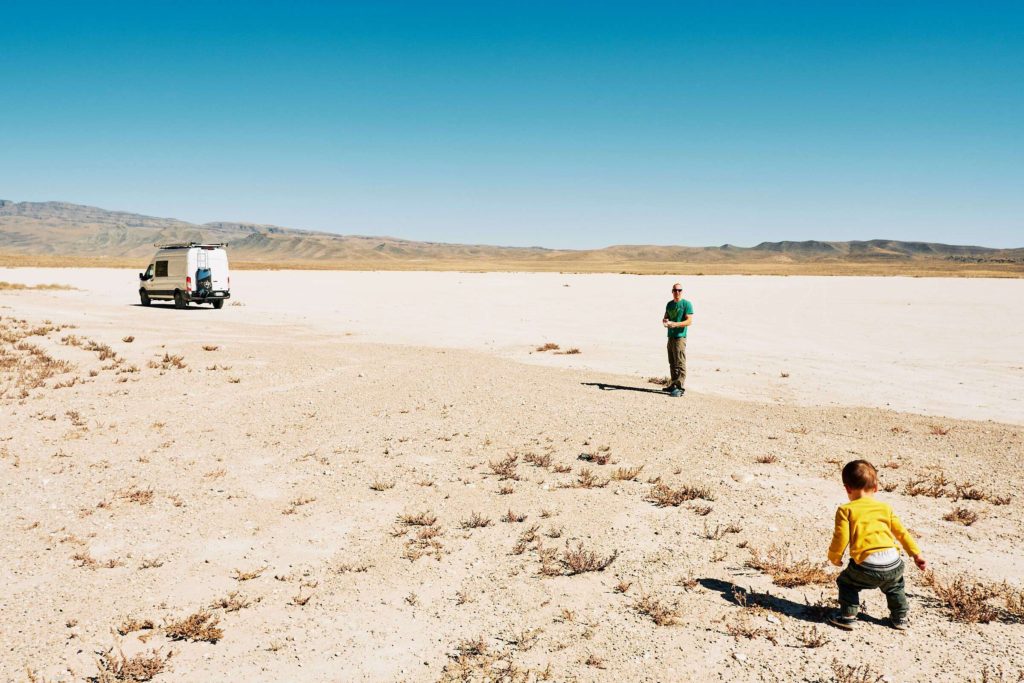
Camper Van Build Tour

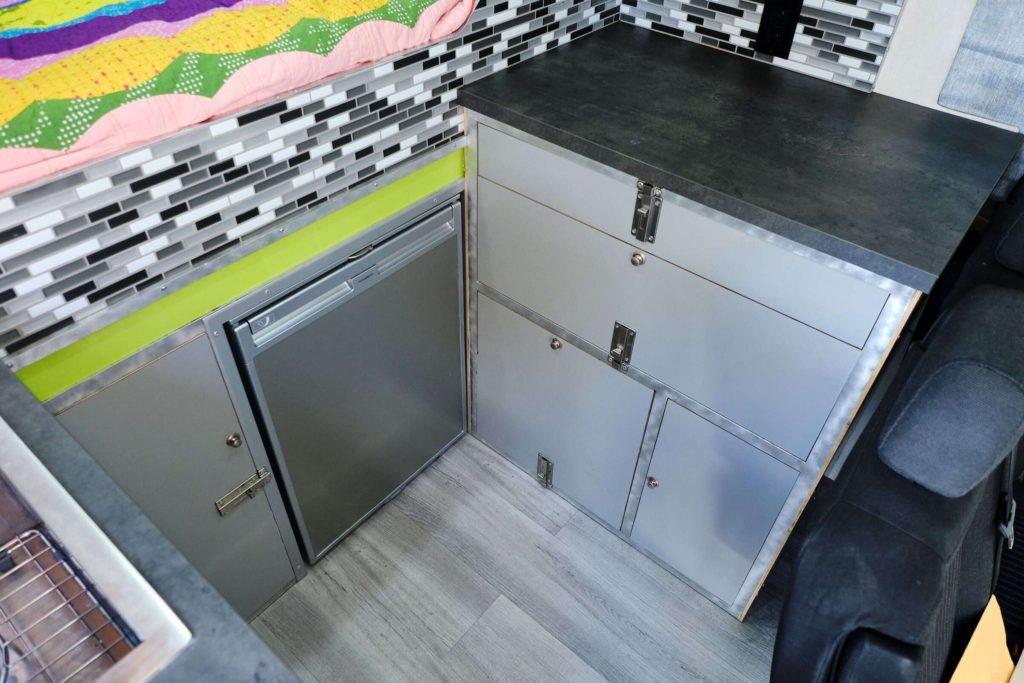
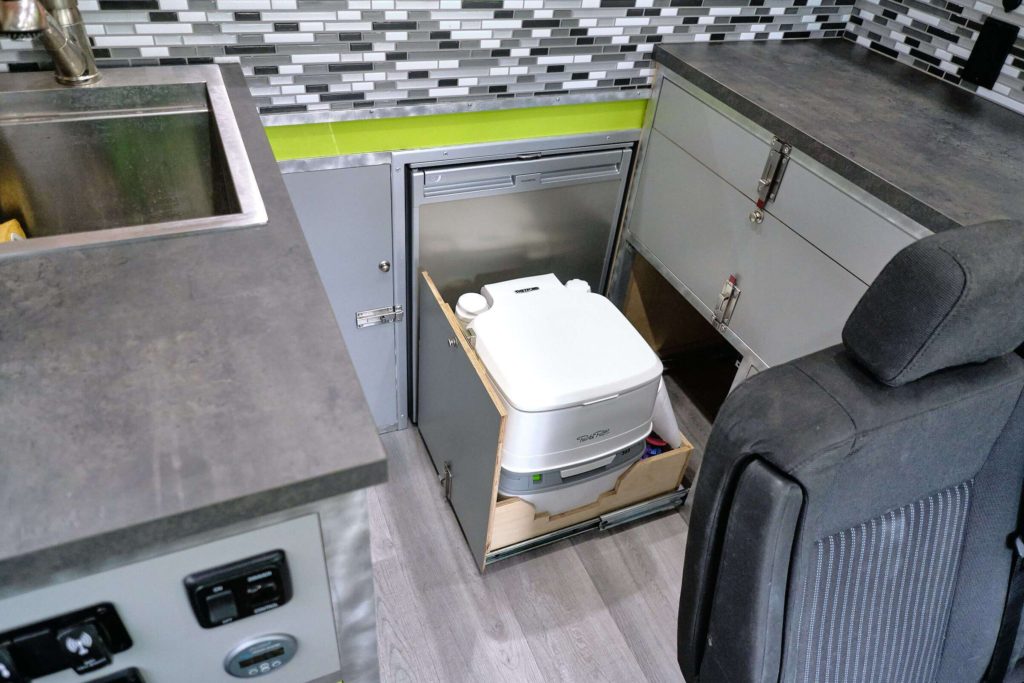
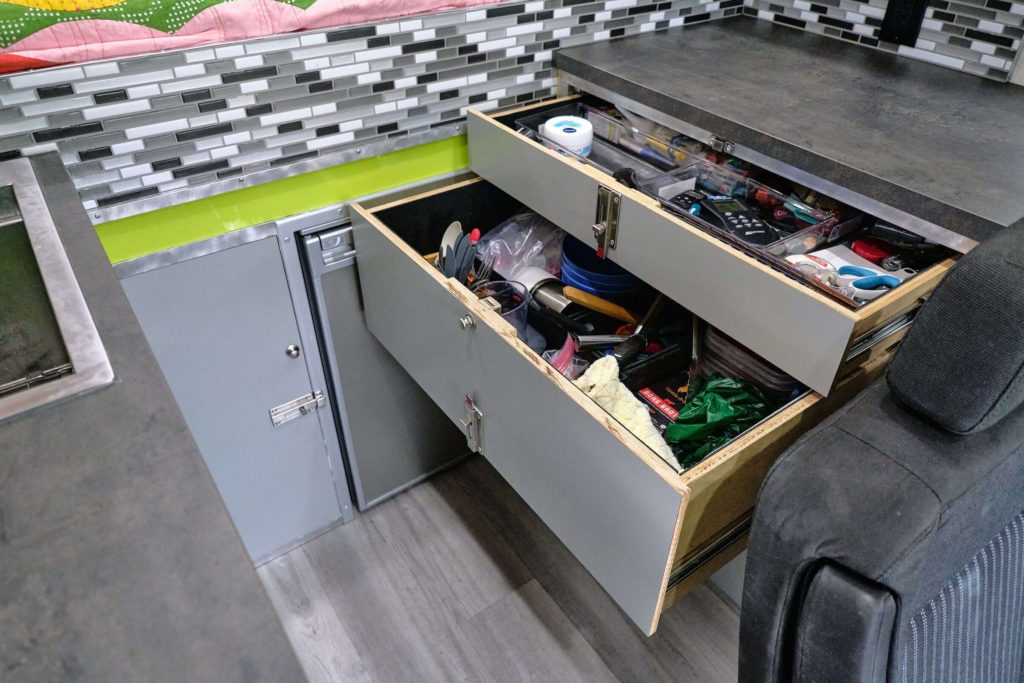
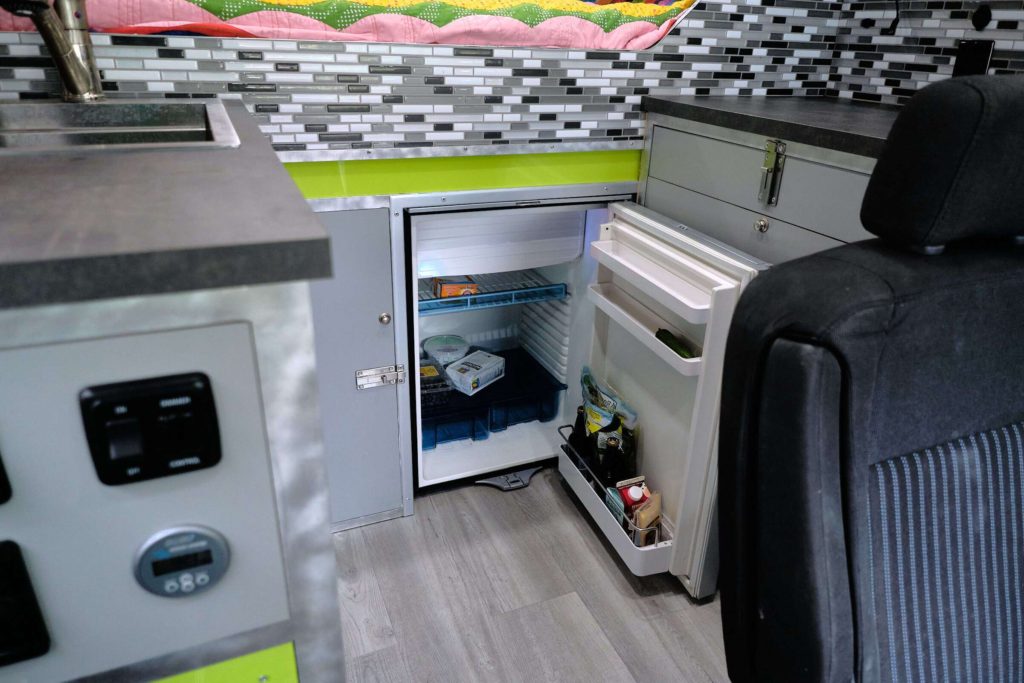


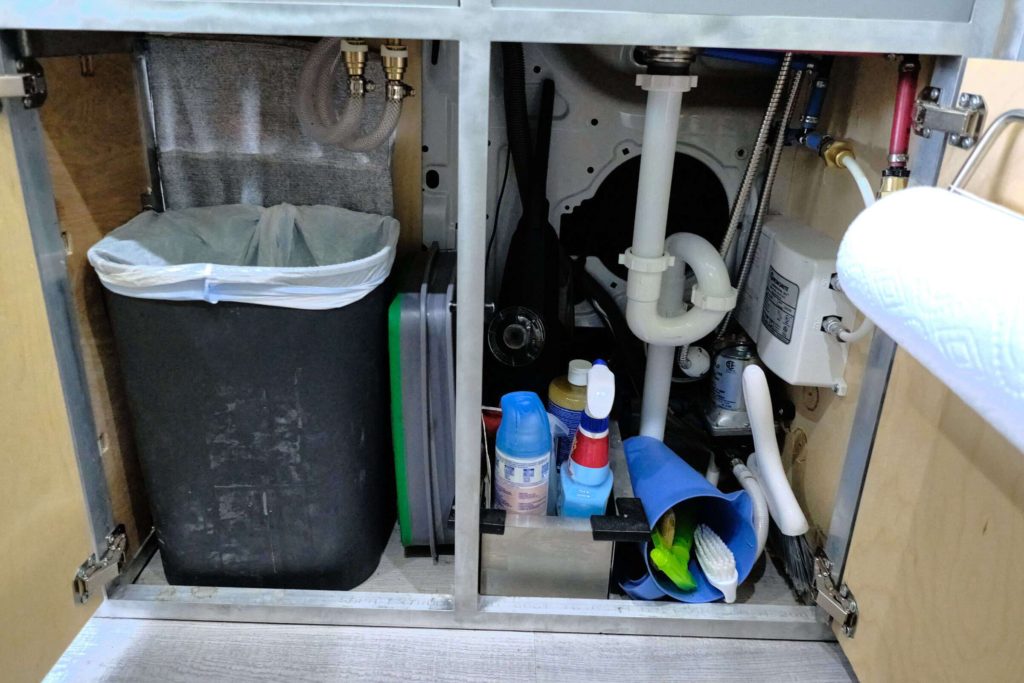
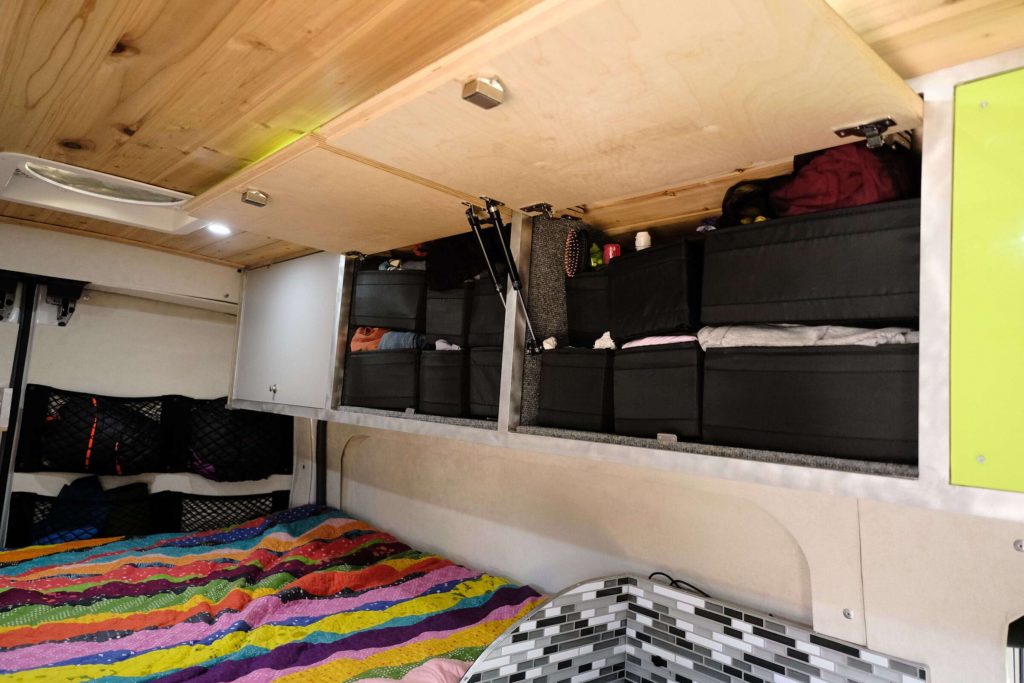
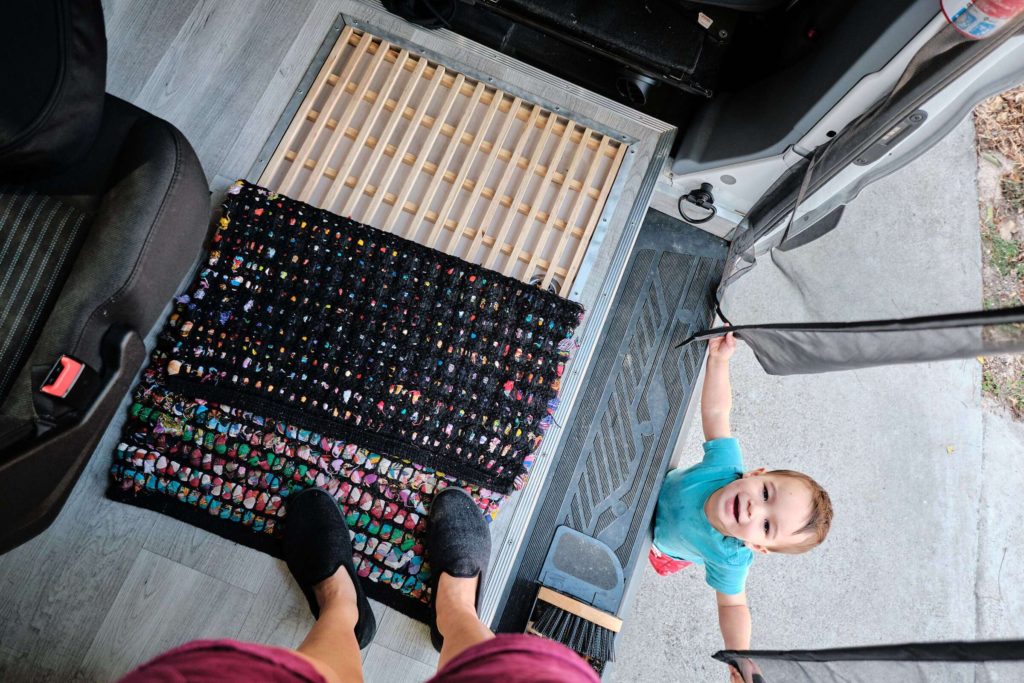
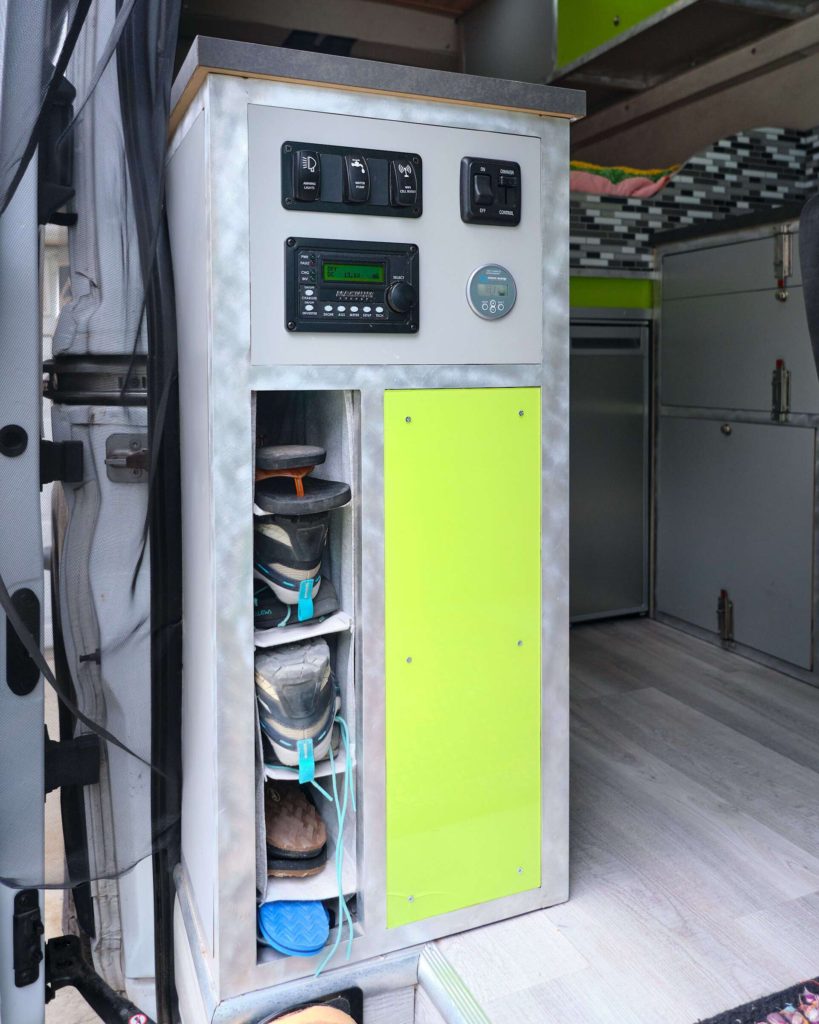
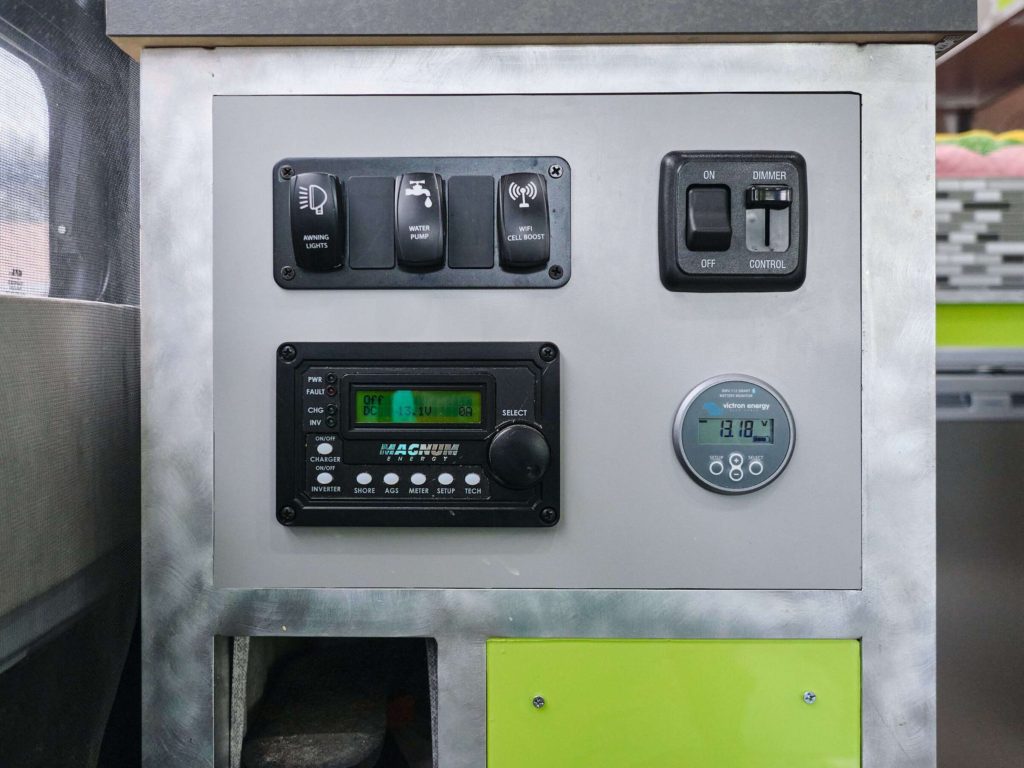
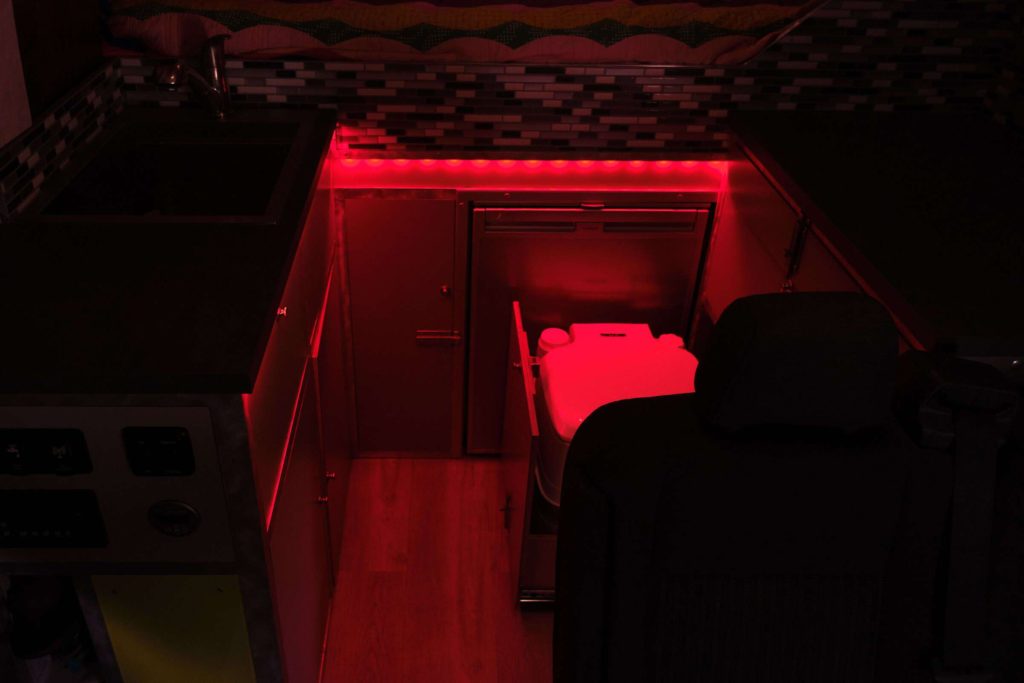
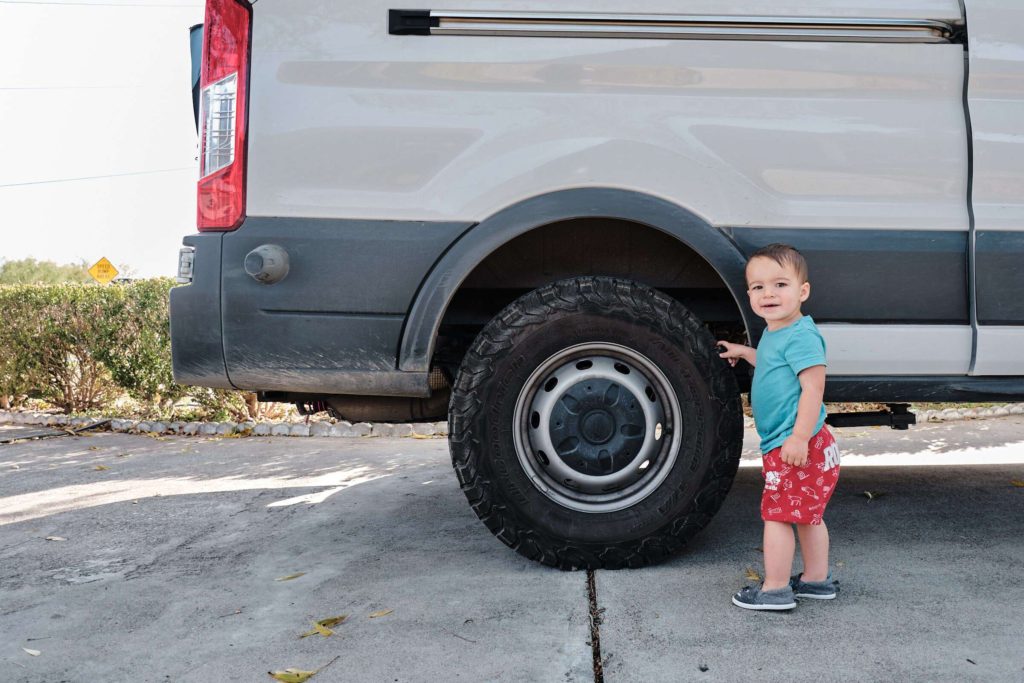
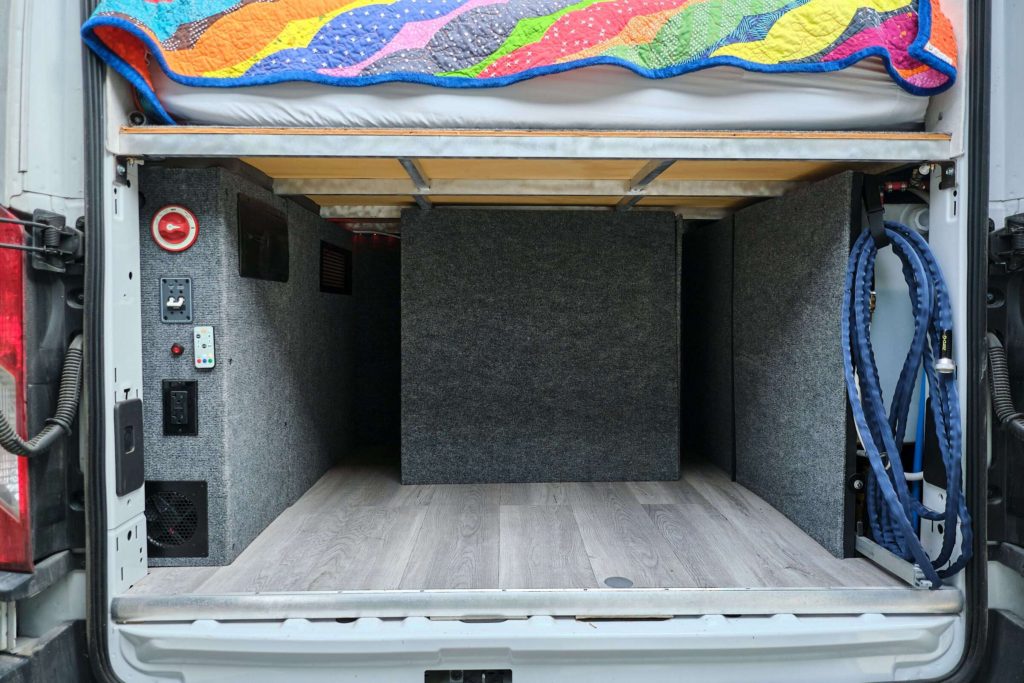
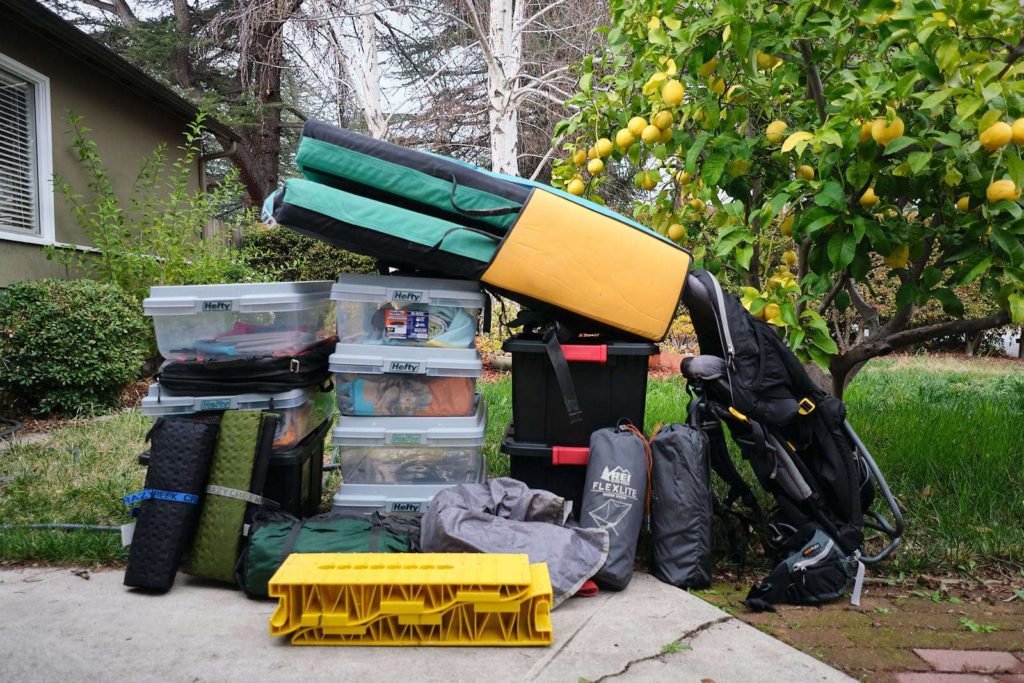
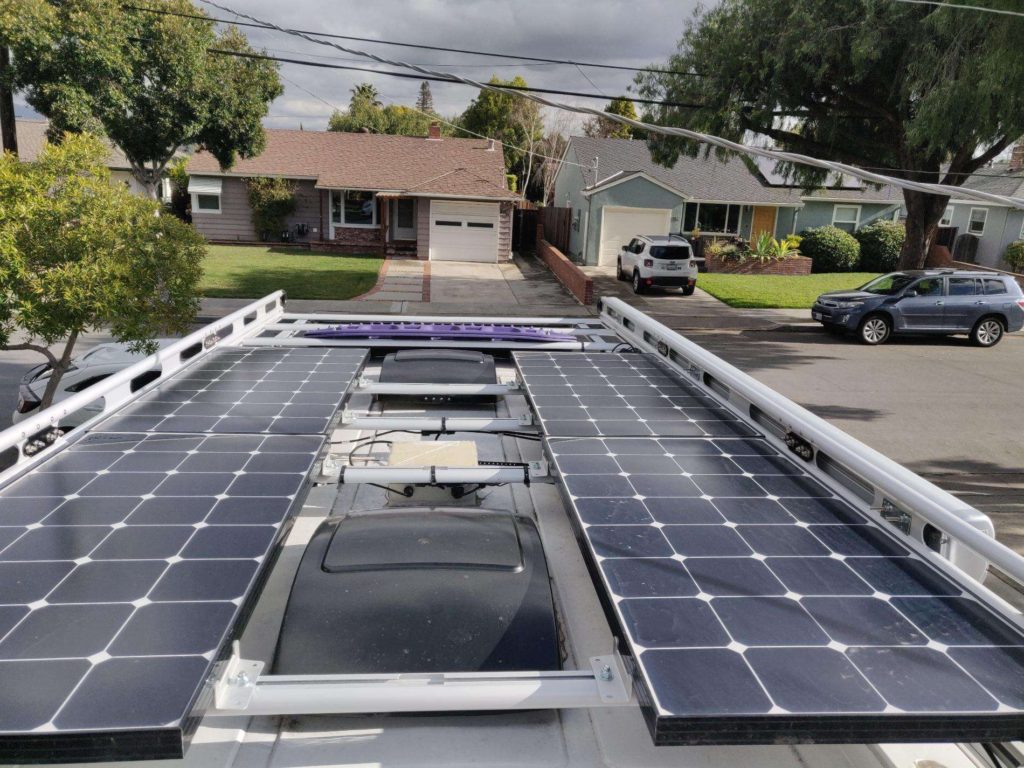
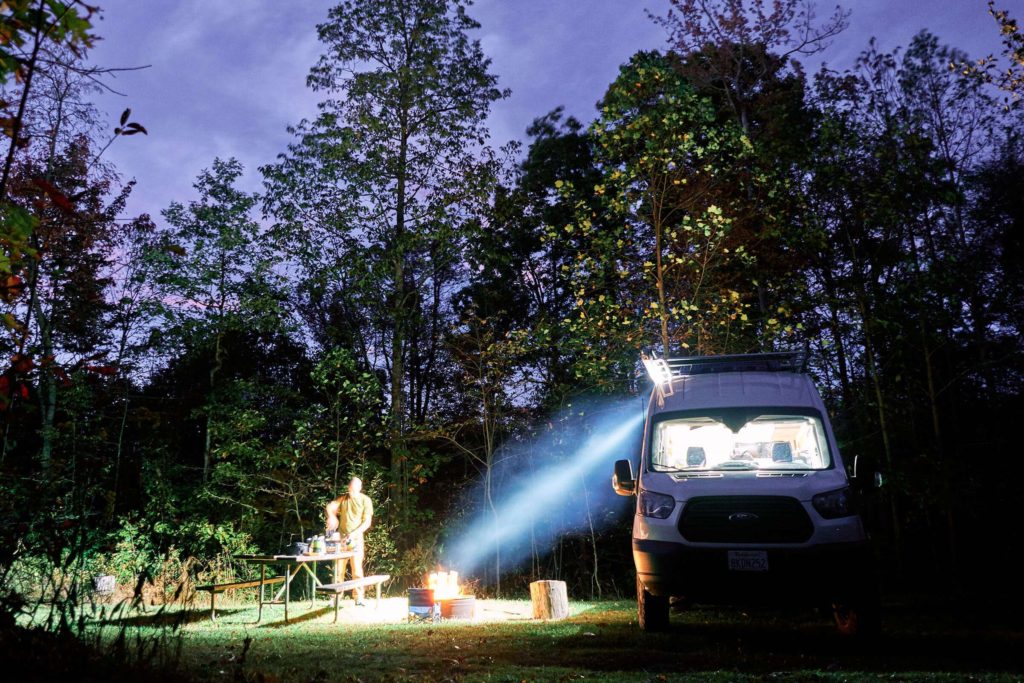
Performance + Livability
Camper van builds typically fall into 2 camps: weekenders or live-ins. Weekenders have a ton of cargo space for bikes, motorcycles, snowboards, etc. at the expense of large water tanks and cabinetry storage. They’re great for getting out for a few days at a time. Live-ins have enough cabinet space, water, etc. to literally live in for months on end, with less space for gear.
We’ve spent up to 3 months of living in our van consecutively. We can go 14 days between laundry, 10 days on water, and 5 days of fresh food in the fridge, with the expense of a smaller garage. We cook every meal unless we’re in a city with a cool café.
We’ve had basically no issues with the van. The Quigley 4×4 lives up to its reputation. If you don’t want to jump $13k in, at least upgrade to the BF Goodrich K02 tires–they’re beyond worth the investment. The stock tires are terrible.
Living on the road with a baby was quite do-able with our design! We did quite well with space.
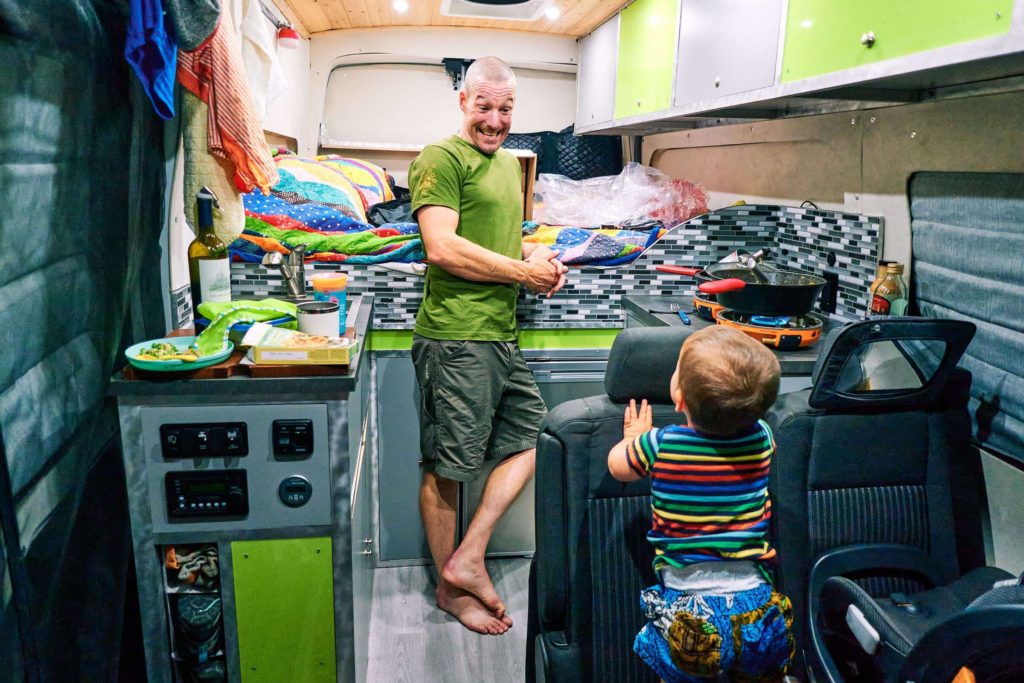
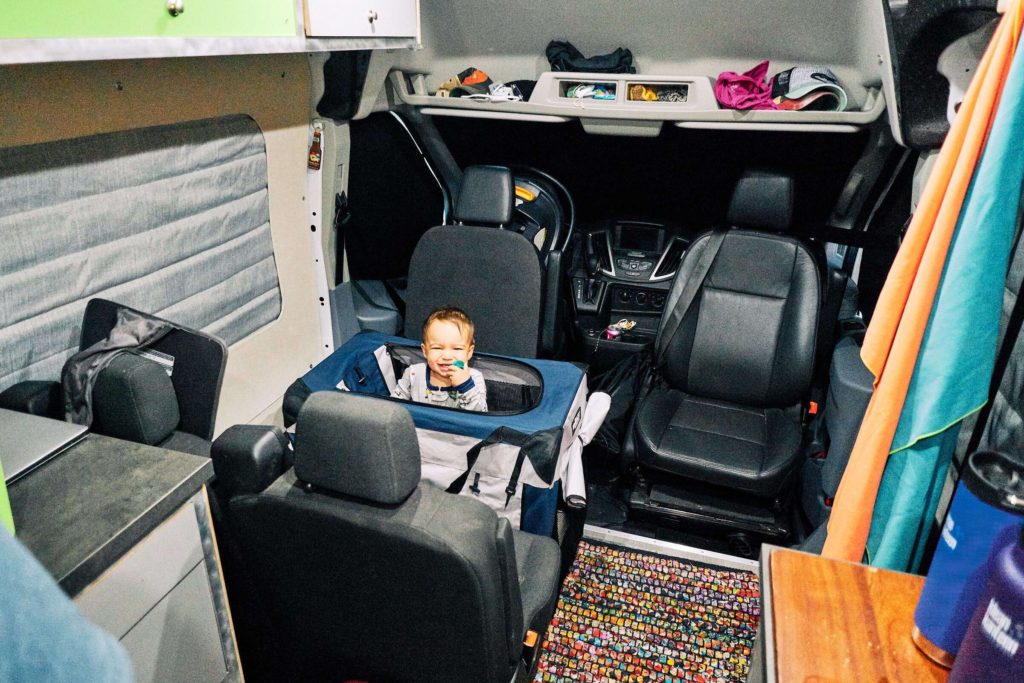
Must-haves we love
- Diesel heater. We keep the van at 55F or warmer with a baby, not to mention it’s so comfy to come back after a cold day of climbing and be toasty warm.
- Portapotty. Seriously, they’re so convenient and easy to clean. Imagine waking up in the middle of the night to a toasty warm van, red LED light strips, and being super comfy to pee. Alternatively, imagine waking up in the middle of the night, finding your puffy jacket, braving the 30deg cold outside, bearing your tooshie, squatting, peeing, and opening the van door again, blasting the other occupants with cold again. Just get a portapotty, trust me.
- Cell phone booster. If there’s 1 bar of signal, it’ll go to at least 3. It’s an amazing comfort to have signal.
What we would do differently
- Make the sliding-door galley longer, extending another foot into the door for more countertop space.
- Add a removable table between the bench seat and front seats.
- Possibly rethink some of the exposed aluminum framing. We’d keep some–it looks amazing–but was a royal pain to inside-mount the cabinet doors.
- Consider welding our own roof rack. It sits ~5in off the roof, which is pretty high.
→ Explore more articles in Camper Van